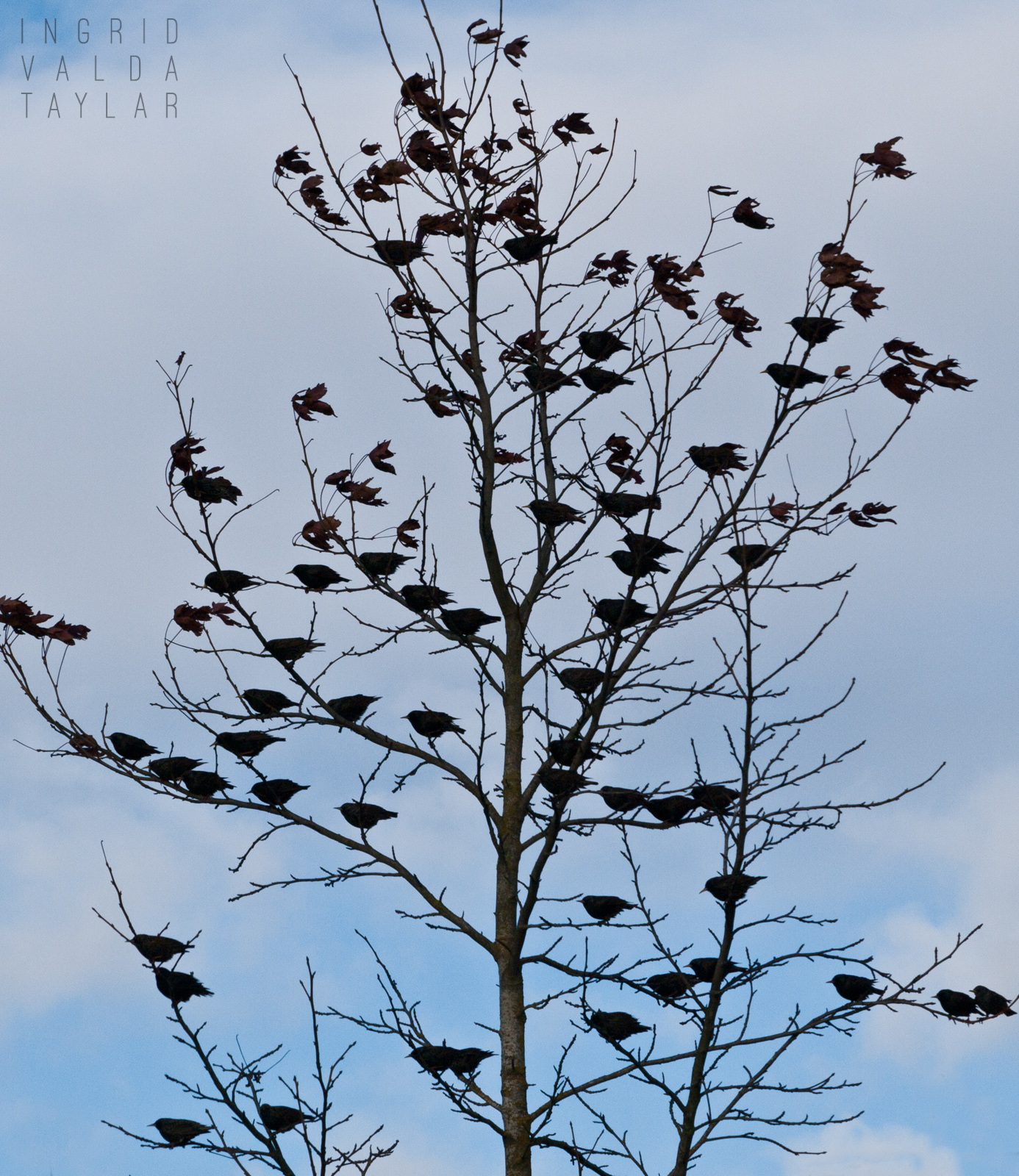
They were so quiet, fluttering in the wind just like the leaves. Not even the softest Starling whistle came from that tree. When you’ve birded or photographed enough, or sometimes even just a bit, it’s wonderful how the slightest anomaly then draws the eye. This was more than slight, but the Starlings were in silhouette, and it wasn’t until I did a double take, that I saw just how many birds commanded this tree.
I’ve written about Starlings often … on why I admire Starlings, despite their many foibles, detractors and non-native complications. This was originally posted in July of 2009: How Starlings Colonized the States

I can’t dislike European Starlings, they didn’t ask to be released in a strange new land. Sure, they are aggressive but that is an adaptation they developed naturally for survival long before they were brought to the US.
And they are lovely.
I’m with you, Mia. Not to mention, I do put some value in the studies which show that Starlings’ deleterious effects might be overstated. It’s a strange paradigm, isn’t it, when you learn about how the Europeans are trying to bring back their native House Sparrows and Starlings, while in the U.S., we expend as much effort (or more) eradicating them.
I put some value in those studies too Ingrid, those and the ones about how many birds outdoor cats kill annually.
I don’t remember seeing Starlings in Europe, I do remember the House Sparrows though.
I love the starlings, they are quite possibly the most prettiest when in large numbers towards dusk when they fly around together and you can see their iridescent feathers shimmer in the light of the sunset.